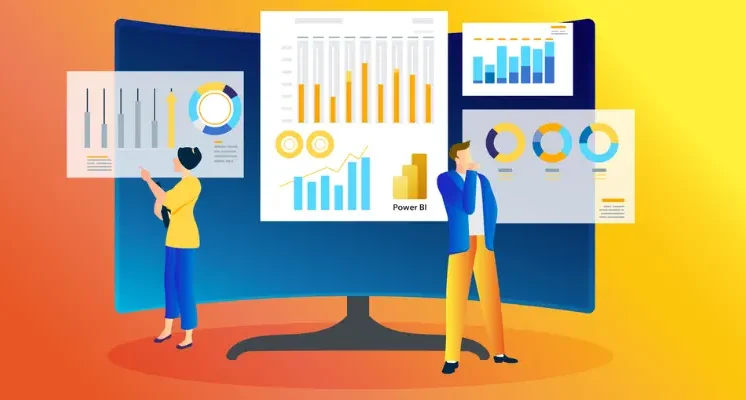How RPA Can Assist Power BI in Automating Customer Insights?

In today’s data-driven business environment, understanding customer behavior is critical for staying competitive. Power BI, Microsoft’s premier data visualization tool, empowers organizations to analyze complex data. However, to fully maximize Power BI’s capabilities, many companies are turning to Robotic Process Automation (RPA) to streamline data processes and enhance customer insights. Combining RPA with Power BI creates a powerful synergy, making Power BI automation more effective and accessible. For those looking to gain expertise in these technologies, specialized RPA Training in Bangalore can be invaluable.
The Power of Power BI in Data Analysis
Power BI enables organizations to transform raw data into actionable insights. Its dynamic dashboards, visualizations, and self-service analytics help make complex data easy to interpret. With automation in Power BI, companies can configure data refresh schedules, making real-time data access simple and efficient. Power BI also integrates seamlessly with multiple data sources, allowing a holistic view of customer data. However, while Power BI automation can handle much of the data processing and reporting, certain repetitive tasks, such as pulling data from external systems or databases, still require significant manual effort. This is where RPA technology proves invaluable.
The Role of RPA in Enhancing Power BI Automation
Robotic Process Automation (RPA) is a technology built to automate repetitive, high-volume tasks. Paired with Power BI, RPA enhances automation in Power BI by handling data extraction, integration, and preparation—steps that otherwise require manual effort. By taking over these tasks, RPA enables a more comprehensive, hands-off Power BI automation experience. If you’re in Marathahalli, there are excellent RPA Training in Marathahalli options that focus on real-world applications, helping you integrate RPA with Power BI effectively.
Streamlining Data Collection and Import
One of the most labor-intensive steps in customer insight analysis is data collection. Traditionally, data analysts must manually pull data from various sources, such as CRM systems, social media platforms, or databases, which can be both time-consuming and error-prone. RPA bots can automate these processes, quickly extracting data from multiple locations and standardizing it for seamless integration into Power BI. This setup means that Power BI automation becomes more efficient, as RPA ensures that Power BI dashboards are populated with the latest data, reducing lag times and manual workload. This end-to-end powerbi automation provides companies with timely insights, helping them respond to customer needs quickly.
Automating Data Cleaning and Transformation
After data collection, the next crucial step is cleaning and transforming to ensure the information is consistent and actionable. Here, RPA can be programmed to perform complex data transformation tasks like removing duplicates, correcting errors, and standardizing formats—all without human intervention. This enhanced automation in Power BI eliminates data inconsistencies, ensuring that Power BI receives accurate data for analysis. For instance, an RPA bot can scan incoming data files for anomalies or apply logic rules to validate entries before data reaches Power BI. By minimizing errors in the data, companies can rely on the insights derived from Power BI as they make strategic business decisions.
Generating Insights and Automating Reports
After data is cleaned and ready for analysis in Power BI, RPA enhances Power BI automation by automating report generation and distribution. Power BI enables customized dashboards, and RPA can be programmed to send these reports automatically to relevant stakeholders, ensuring everyone has access to up-to-date insights. The continuous data flow between RPA and Power BI enables more accurate customer analysis and decision-making. Those interested in learning more about automated reporting should explore Power BI Training in Bangalore for practical experience.
Benefits of Combining Power BI and RPA for Customer Insights
Integrating RPA with Power BI provides substantial advantages:
- Increased Efficiency: By managing data extraction, cleaning, and reporting, RPA and Power BI automation free up employees to focus on more value-added tasks.
- Cost Reduction: Automation reduces operational costs by cutting down on the manual work required.
- Enhanced Accuracy: With RPA minimizing human error, Power BI receives more accurate data, resulting in reliable insights.
- Improved Decision-Making: With real-time, automated insights, companies can swiftly respond to market shifts and evolving customer preferences.
Leveraging Power BI Automation for Future Success
As data grows increasingly important, the ability to derive fast and accurate insights is invaluable. Embracing Power BI automation with RPA enables companies to respond to customer needs, optimize services, and refine marketing strategies. This combination is a forward-thinking approach that opens new opportunities for powerbi automation and data-driven decision-making.
Integrating RPA with Power BI is a powerful strategy that enhances the automating of data analysis, streamlining customer insight generation. For those who want to dive deeper into this synergy, Power BI Training in Marathahalli offer comprehensive, hands-on programs designed to build expertise in these technologies. This dual approach to automation—leveraging both RPA and Power BI—enables businesses to harness data’s full potential, transforming insights into impactful strategies.